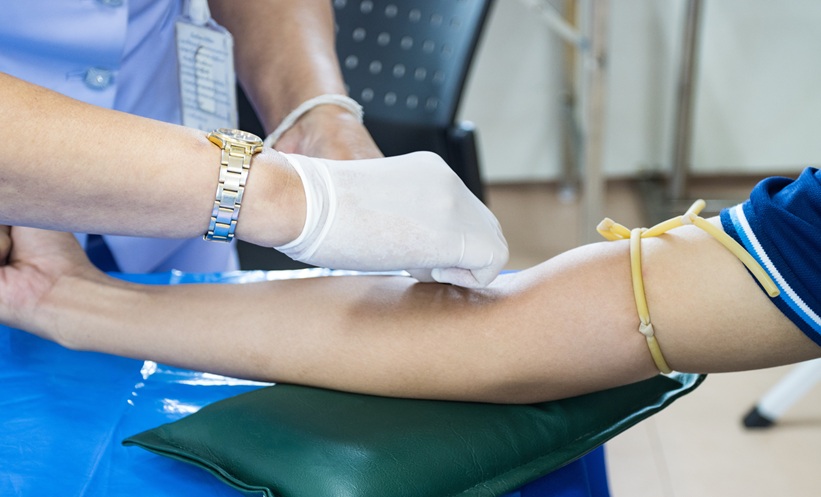Public health in sub-Saharan African countries is experiencing a double burden of diseases. First, for decades, these countries have been struggling against infectious diseases. Second, the demographic transition in the area is leading to a rising prevalence of non-communicable diseases (NCDs). Unfortunately, the health systems in sub-Saharan Africa are vulnerable, under-resourced, and unable to address these public health issues. Furthermore, protracted political instability and the consequent conflict zones are worsening the situation. In this short essay, the authors report their real-world experience of providing kidney care for patients with NCDs and chronic kidney disease (CKD) in Bunia, the capital city of the Ituri, a north-eastern district of the Democratic Republic of the Congo (DRC) that has been conflict-ridden for years. In conclusion, there is a lack of evidence and research regarding the heavy burden of NCDs and the appropriate healthcare policy in humanitarian settings such as conflict zones. A co-ordinated, standardised, and evidence-based approach is strongly recommended to reach affected populations in these areas.
COMMENTARY
“There is no nephrology here, there is only weapons,” stated a 47-year-old Congolese patient with CKD (working as a United Nations [UN] staff member in Bunia) when she was asked by doctors whether there were any available nephrology clinics in the Ituri district.
The burden of NCDs is rising worldwide. Thus, the World Health Organization (WHO) has estimated, in a report related to global threats, that 70% of global deaths in 2019 resulted from NCDs.1 Furthermore, the global challenge represented by NCDs has been well recognised by both the UN Sustainable Development Goals and the WHO Global NCD Action Plan 2013–2020.1,2 The target set for these guidelines is the reduction of premature deaths due to the main NCDs in the next decade. Nevertheless, three-quarters of NCD-related deaths might happen in low- and middle-income countries (LMICs).1,3 Those countries would struggle with the growing challenge of NCDs in addition to both acute and infectious diseases.3 This unprecedented and very dire situation is an evident issue for public health systems in LMICs. Countries in sub-Saharan Africa do not make an exception to the rule and are, like most LMICs, exposed to an unexpected epidemiological transition of contributors to disease burden.4 The prevalence of NCDs has increased in this area and is responsible for rising disability-adjusted life years. Many phenomena, including urbanisation, unhealthy lifestyles, inequality, and poverty, might explain this tendency.4
On the other hand, sub-Saharan African countries have always suffered from two major barriers to accessible and quality healthcare. The first concern is related to health systems that are vulnerable, under-resourced, and relatively inaccessible to the population.4 The second problem is the presence of political instability in some of those countries, with frequent state-based and no-state-based conflicts.5
NCDs management is very difficult and is even more complicated and challenging in armed conflict zones. One should know that NCDs profiles in such settings are never the same, and the simple ‘one size fits all’ approach to NCDs management does not apply in such contexts.5,6 Humanitarian needs vary depending upon location of the conflict and demographic characteristics of the population involved in clashes. For example, obesity, diabetes, and cardiovascular diseases were the main recorded NCDs among refugees during the Syrian conflict.7 In contrast, hypertension was the first health condition among some displaced persons in Central Africa.5,6 Furthermore, NCDs have not always been the top priorities of health pracitioners.8 For several reasons, communicable (infectious) diseases are always prioritised over NCDs, and rather than building an efficient health system, aid usually goes to security purposes. Lack of clear and evidence-based guidelines is an additional barrier to appropriate NCDs management in such disruptive settings.8
REAL-WORLD EXPERIENCE OF PROVIDING HEALTHCARE IN CONFLICT SETTINGS
The case of the DRC is emblematic. The eastern part of the country has been conflict-ridden for years.9 The area represents 10% of the landmass and is the homeland of 15% of the whole Congolese population. Hundreds of armed groups have appeared and disappeared in unstable coalitions based on ethnic selections and driven by economic interests. These persistent clashes and fights worsen the population’s living conditions in those areas, with millions of refugees and internally displaced persons.9
The authors served as UN health workers in Bunia, the capital city of the Ituri district, an armed conflict zone in the north of the DRC, for 8 months (July 2021–February 2022). They assessed the epidemiological distribution of NCDs while providing basic medical care to samples of the population in these areas. Knowing that the life-threatening nature of the environment requires strict respect for safety regulations, the authors organised medical action around three pillars: security, kidney care, and education.
Hundreds of patients suffer from NCDs such as diabetes, hypertension, and chronic cardiac and kidney diseases. These diseases are probably more frequent in urban areas, where security issues are less threatening than in suburban and rural zones. Unexpectedly, CKD is an important component. The underlying causes of CKD are not well identified. Unknown causes are the most common; otherwise, chronic HIV infection and NCDs, including diabetes and hypertension, are expected to cause a rise in the prevalence of CKD. Patients with CKD are poorly informed about their conditions, receive inadequate care, and frequently use traditional medicine products for their medication. The local health system is fragmented and unable to address the additional rising burden of CKD and other NCDs. Moreover, the supply of material resources and essential drugs suffers from frequent interruptions because of logistical issues, which is a familiar obstacle in conflict settings.
Multiples cases of acute kidney injury are also diagnosed following infections (such as malaria, diarrhoea, etc.). The authors noticed no indication of renal replacement therapy in all cases of reported kidney failure. Nevertheless, the authors selected peritoneal dialysis as the renal replacement therapy technique given the context (frequent lack of electricity). Although the required materials (peritoneal dialysis solutions and catheters) were not available, the authors collaborated with the local authorities and secured the commitment to facilitate access to these materials.
The enhancement of population awareness against NCDs was also an important target. Thus, the authors established a training programme in co-ordination with the International Committee of the Red Cross (ICRC). The training objectives were the basic medical management of acute infectious diseases and main NCDs. Approximately 30 Congolese youths were trained in the diagnosis, basic primary care, and follow-up of chronic conditions, including hypertension, diabetes, and CKD. The learners were also initiated to the organisation of follow-up care, the use of some medical devices (blood pressure measurement, capillary blood glucose testing, etc.), interpretation of laboratory tests, and patient information. Training tools also included clinical practice and simulations.
During recent years, some medical facilities in the city of Bunia have dedicated their activities to the care and prevention of NCDs; received medical specialists from abroad; and developed, through the transfer of knowledge, a degree of expertise in NCDs management.
CONCLUDING REMARKS
Some sub-Saharan African regions and countries are affected by protracted and multiple conflicts.3,10 In 2015, the average duration of a refugee’s displacement reached 26 years, leading to increased prevalence of NCDs among those vulnerable populations.3 While becoming long-lasting, such clashes are adding tremendous obstacles to the traditional healthcare barriers, transforming people involved in such conflicts into hostages. This not only exacerbates inequities in access to care but also adversely impacts the quality of CKD management received by patients.3 Several reports have shown that healthcare interventions in such areas are complicated and impacted by multiple factors. Aebischer Perone et al.11 presented 10 fundamental questions that every humanitarian actor should consider before providing care for NCDs in emergency settings. Although telehealth could offer an alternative solution in such settings, there is lack of research regarding the usefulness of this approach in crisis.11,12
Unfortunately, the public–private partnership is very weak. In order to address the complicated issue of care for NCDs in conflict settings, the authors advocate for healthcare actors to work in a co-ordinated fashion. The available human and financial resources were limited. Nevertheless, the authors contributed to providing basic healthcare to hundreds of patients with NCDs as well as dozens of individuals with CKD. The authors also participated vigorously to enhance awareness of CKD and acute kidney injury in the conflict-affected setting. Although the authors consider their efforts insufficient, they nourish the hope that more structured, co-ordinated, and efficient interventions will be organised in
the future.5-12







